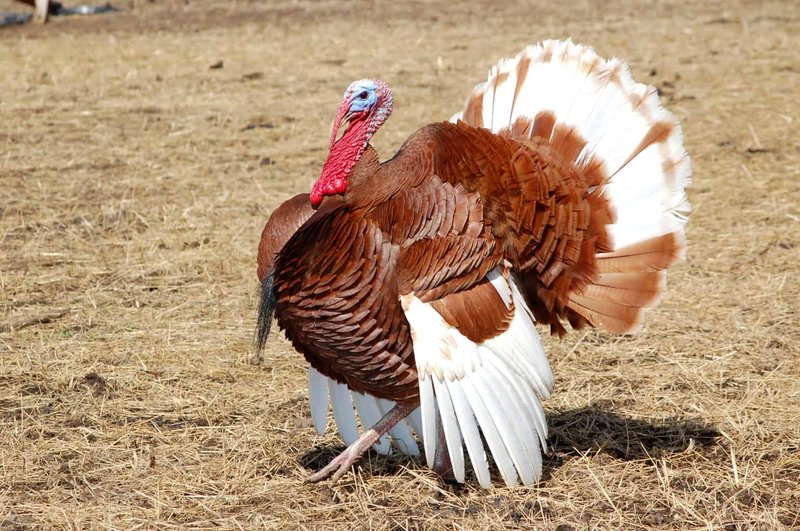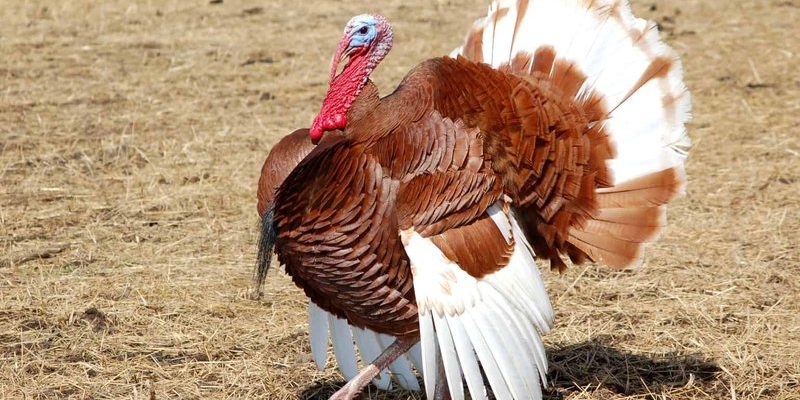
Imagine sitting in a cozy café, sipping on your favorite drink, and a friend leans in to tell you about the secret life of turkeys. You’d probably be surprised to hear that these birds, with their unique calls and behaviors, are quite social and expressive creatures. Just like humans use different tones of voice to convey feelings, turkeys do the same. So, let’s dive into the world of turkey vocalizations and unravel what these sounds really mean.
Common Turkey Sounds
Turkeys have a variety of vocalizations that serve different purposes. The most common sounds you’ll hear are the classic gobble, cluck, purr, and yelp. Each of these calls plays a crucial role in turkey communication.
– Gobble: This is perhaps the most recognized turkey sound. Male turkeys, or toms, gobble during mating season as a way to attract females and assert dominance. It’s loud and can carry over great distances, making it an attention-grabbing call.
– Cluck: This sound is softer and often used for casual communication. Hens cluck to keep in touch with each other, especially when they’re moving about or feeding. Think of it as their way of saying, “Hey, I’m over here!”
– Purr: A soft, rolling sound, the purr can indicate contentment or serve as a warning. It’s mostly used when turkeys are feeling safe or when they’re close to their flock.
– Yelp: This sound is made by both hens and toms and can vary in intensity. It’s often used to signal alarm or alert other turkeys to potential danger.
Understanding these sounds is essential for anyone who enjoys wildlife watching or turkey hunting. Knowing what a turkey is saying can enhance your experience outdoors.
The Importance of Context
Just like with humans, the context in which a turkey vocalizes is key to understanding its meaning. A single sound can convey various emotions depending on the situation. For example, a turkey might gobble excitedly during mating season, but the same sound could indicate agitation if it’s startled.
You might be wondering how to distinguish between these sounds in different situations. Here’s where observation comes in handy. If you hear a rapid series of yelps, for instance, it could indicate that a turkey feels threatened. On the other hand, a relaxed cluck amidst feeding suggests a peaceful atmosphere.
How Time of Day Affects Turkey Sounds
The time of day can also influence turkey vocalizations. Early morning is often the most active time for turkeys, especially during the breeding season. Toms gobble fiercely at dawn, trying to attract hens and assert their territory. As the day progresses, these sounds typically decrease, and you might hear more clucking and purring as turkeys forage quietly.
In contrast, during late afternoons, turkeys might become more vocal again as they prepare to settle down for the night, signaling to each other to find a safe roosting spot.
How Turkey Sounds Help with Hunting
For hunters, understanding turkey vocalizations can be a game-changer. If you’re out in the field, knowing what a turkey is saying can help you strategize your next move.
Using call techniques that mimic turkey sounds can attract them closer. For instance, if you can imitate a hen’s yelp or cluck, you might lure in a curious tom. Just remember, timing and subtlety are crucial. A loud call can scare them away, while a soft, natural-sounding call can be enticing.
Types of Calls for Hunting
When it comes to hunting, there are several types of calls that can be particularly effective:
- Box Calls: Easy to use and versatile, these are great for producing loud sounds to grab a turkey’s attention.
- Slate Calls: These create softer sounds, ideal for coaxing in wary turkeys with a gentle cluck or purr.
- Diaphragm Calls: For those who want to go hands-free, diaphragm calls allow for a range of sounds, perfect for mimicking hen noises.
Understanding turkey vocalizations isn’t just a fun fact; it can greatly enhance your hunting experience.
Understanding Body Language
While sounds are significant, you should also pay attention to turkeys’ body language. Their physical movements often accompany vocalizations and can provide additional context. If a turkey is puffing up or strutting while gobbling, it’s likely feeling confident and looking to attract a mate. Conversely, if a turkey is hunched and silent, it might be feeling threatened.
Looking for these visual cues can help you not only understand the sounds better but also predict what a turkey might do next.
Why It Matters
Understanding turkey vocalizations isn’t just about observation; it’s about fostering a connection with nature. Whether you’re a bird-watcher, a hunter, or simply someone who enjoys the great outdoors, knowing what turkeys are saying can deepen your appreciation for these incredible animals.
Plus, when you hear a turkey call, you might start to feel like you’re part of their world. Imagine sitting in a quiet forest, surrounded by the sounds of nature, and being able to interpret the stories being told around you. It adds a new layer of life to your outdoor experiences.
Turkey vocalizations open up a fascinating world of communication among these birds. By understanding the sounds they make and the contexts in which they use them, you can appreciate the complexity of turkey behavior. Whether you’re out in the woods trying to catch a glimpse of a wild turkey or simply enjoying the sounds of nature, being able to interpret these vocalizations enriches our interaction with wildlife.
So, next time you hear a turkey gobble, cluck, or purr, take a moment to think about what it’s really saying. You might just find yourself fascinated by how much these feathered creatures have to say!

